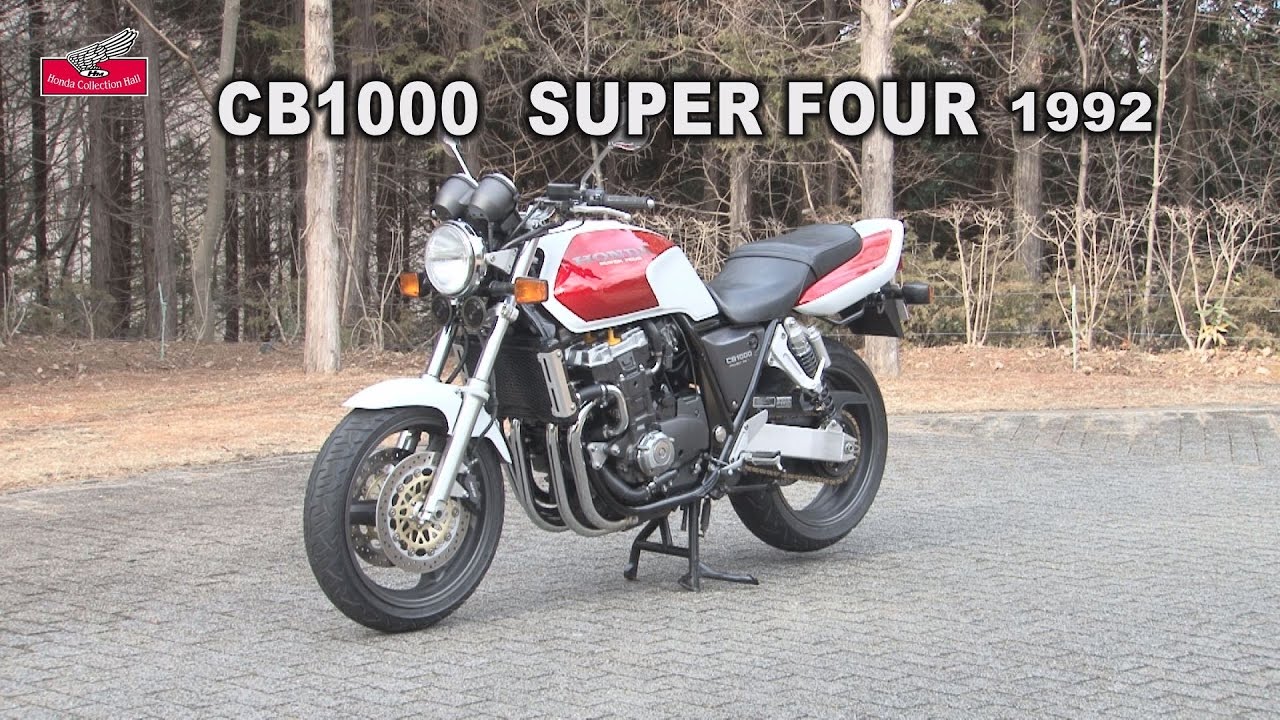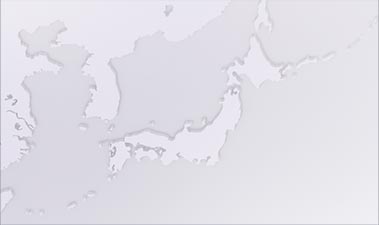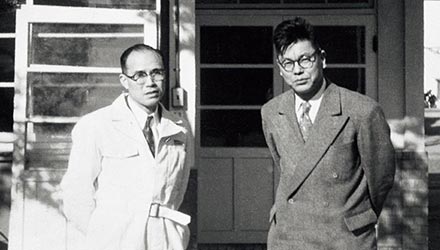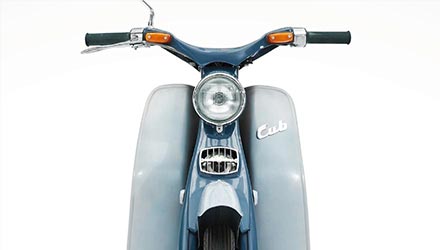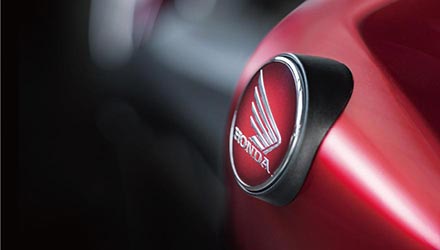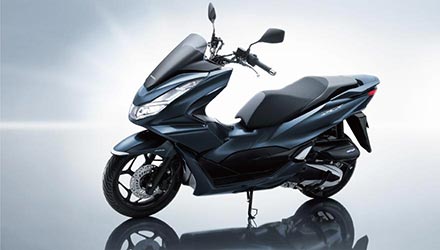Evolving Lineup and New PRO'S Dealers
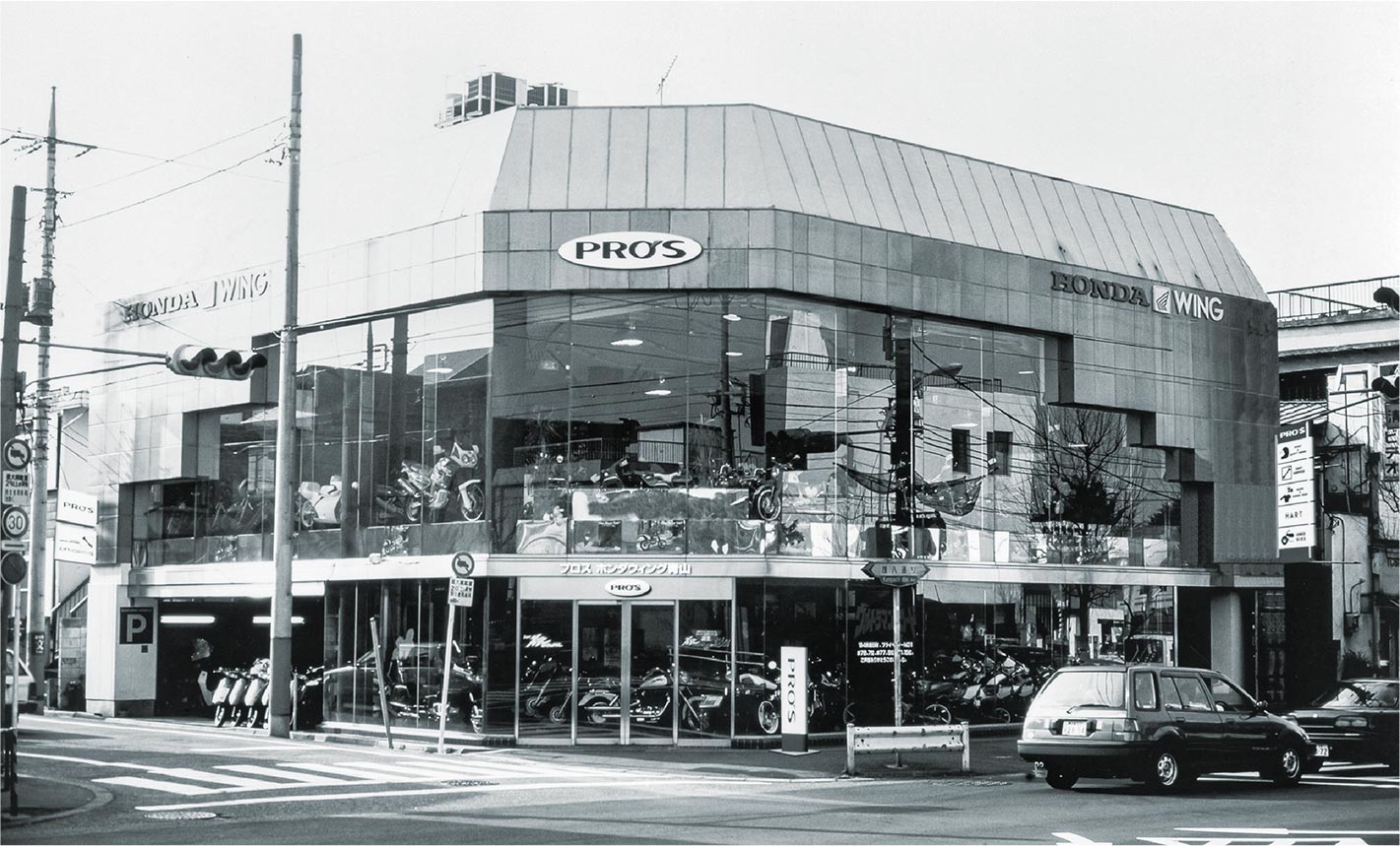
PRO'S dealership
In preparation for its return to the World GP in 1979, Honda developed the NR500 powered by a new 4-stroke V4 engine with oval pistons. In 1982, the V4 production models VF750 Sabre and Magna were launched. In the following years, from the VF750F to the RVF750, both production and racing machines were powered by V4 engines.
Furthermore, starting with the VT250F released in 1982, high-performance road sport bikes with V-twin or V4 engines were added to the Honda motorcycle lineup.
In 1988, the American-style Steed 400/600 models were released with a narrow-angle V-twin engine and a relaxed riding style. This model ushered in the Japanese-made American motorcycle boom.
In 1984, Honda launched the Spacy 250 Freeway, a pioneering big scooter, followed in 1986 by the Fusion, which incorporated cruiser elements for long-distance riding and tandem comfort. In 1989, Honda introduced the Freeway, its first 250cc class scooter with a built-in center trunk that could hold two helmets, followed by the Foresight in 1997 and the Forza in 2000. A big scooter boom was sweeping across Japan.
In 1988, voluntary restrictions on the maximum displacement of 750cc for motorcycles sold in Japan were abolished, and there was a growing demand for over-Nanahan (750cc) models. That same year, Honda imported the U.S.-produced Gold Wing and marketed it as the first over-Nanahan model. At the time, Honda did not have a unique big bike that would make a strong impression for the CB brand. The need for a model that would meet the changing times led to the basic concept that included a liquid-cooled, DOHC, in-line four-cylinder engine housed within a body structure that is both sexy and wild, and a bike that had mesmerizing performance. This led to the launch of the “Project Big-1” and the release of the CB1000 SUPER FOUR in 1992, which revived the traditional Honda big straight-4. In 1996, the limits on driving schools that could issue licenses for large bikes were eased, leading to the big naked bike boom.
At that time, motorcycle riders were largely in one of two groups: hobbyists and sports-oriented riders, especially of big motorcycles, and convenience-oriented users of business bikes and moped scooters. In 1996, Honda established new PRO'S dealers in Japan, in place of the conventional Wing dealerships in order to respond to the hobbyist and sports-oriented users who demanded specialized knowledge, detailed information, and advanced service technology. The concept of PRO'S dealers aimed for highly specialized, handling of all types of motorcycles from mopeds to motorcycles, with advanced and high-quality service, and undertaking activities to promote safe riding. The non-PRO'S dealers were designated as “Honda dealers” handling all types of motorcycles from Class 1 mopeds to light motorcycles (250 cc).
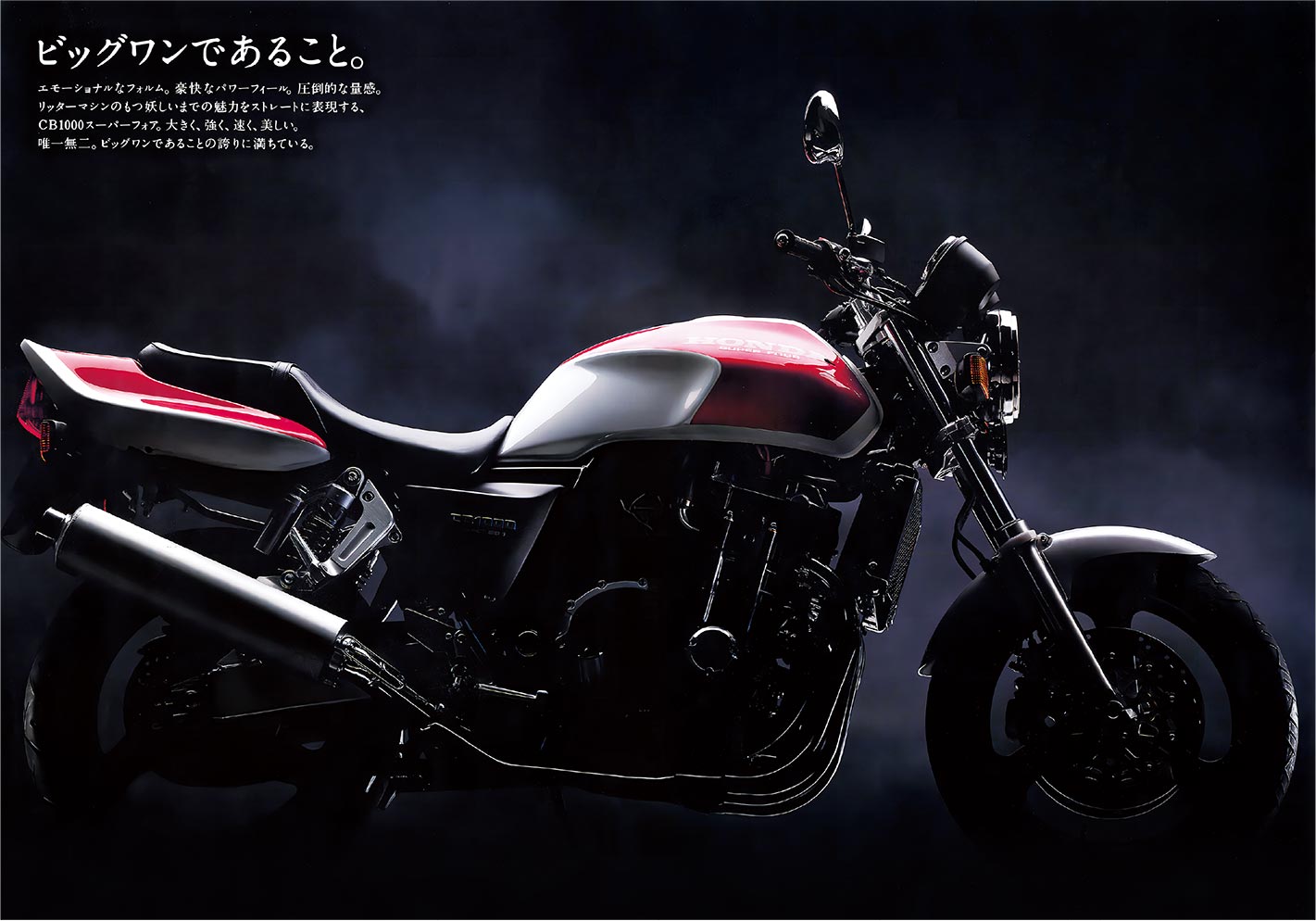
CB1000 SUPER FOUR
Honda Motorcycle Japan Established as Comprehensive
Motorcycle Sales Company in Japan, Responding
to Market Changes with Agile Sales Activities
The continued shrinking of the Japanese domestic motorcycle market seemed unstoppable, with sales falling to 780,000 units in 2000. Major changes in society, such as the rise of electrically power-assisted bicycles, the decline in the youth population, and the rapid spread of cell phones and the Internet, were thought to be factors. At the same time, the need for motorcycles as a tool of self-expression, especially among young people, were becoming even more diversified, and the popularity and demand for imported motorcycles from the West was increasing, making the battle for market share even tougher. In order to respond to such changes, Honda needed to conduct sales activities that were agile, and closely tied to the market.
In 2001, Honda combined its wholesale sales companies and its motorcycle sales and support divisions to establish Honda Motorcycle Japan Co., Ltd. (HMJ). The new company’s goal was to establish a structure with comprehensive functions for motorcycle sales, including new and used motorcycle sales, service, parts, and accessories, as well as motorsports advertising and public relations activities, in order to respond quickly to customer needs.
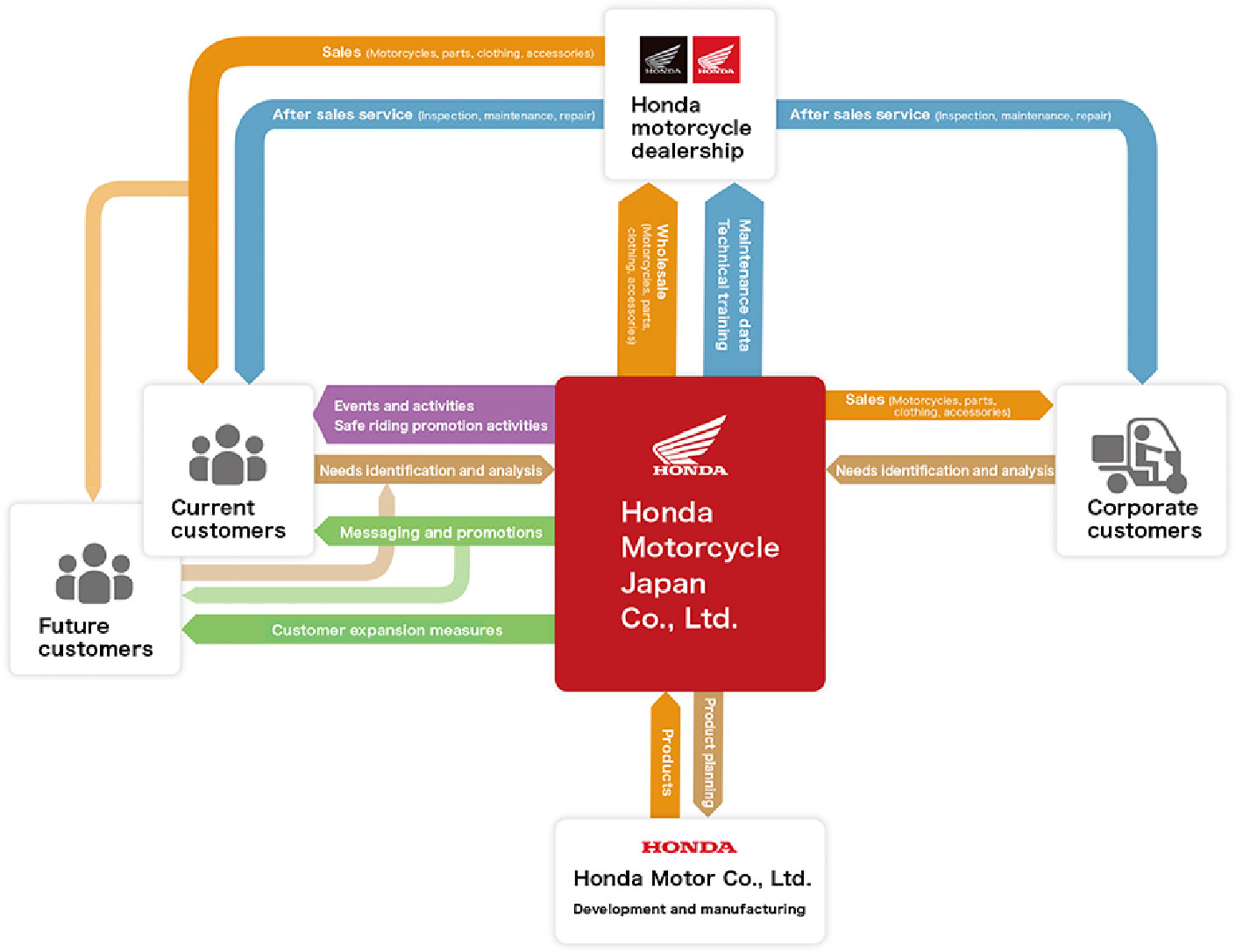
High Quality Service All Over Japan:
Honda Dream Dealerships
In 2002 with the establishment of HMJ, Honda established Honda Dream dealers, specializing in sport bikes. In order to meet the needs of sport bike enthusiasts who demanded a wide variety of high value-added services, Honda took the initiative in the creation of a nationwide network that offers high-quality services such as well-equipped showrooms, specialized maintenance, and safe driving instruction by qualified personnel.
Featuring sufficient shop size and functions to meet customer needs at a high level, Honda Dream dealers proactively implemented activities to enhance the Honda motorcycle brand and increased customer trust in Honda.
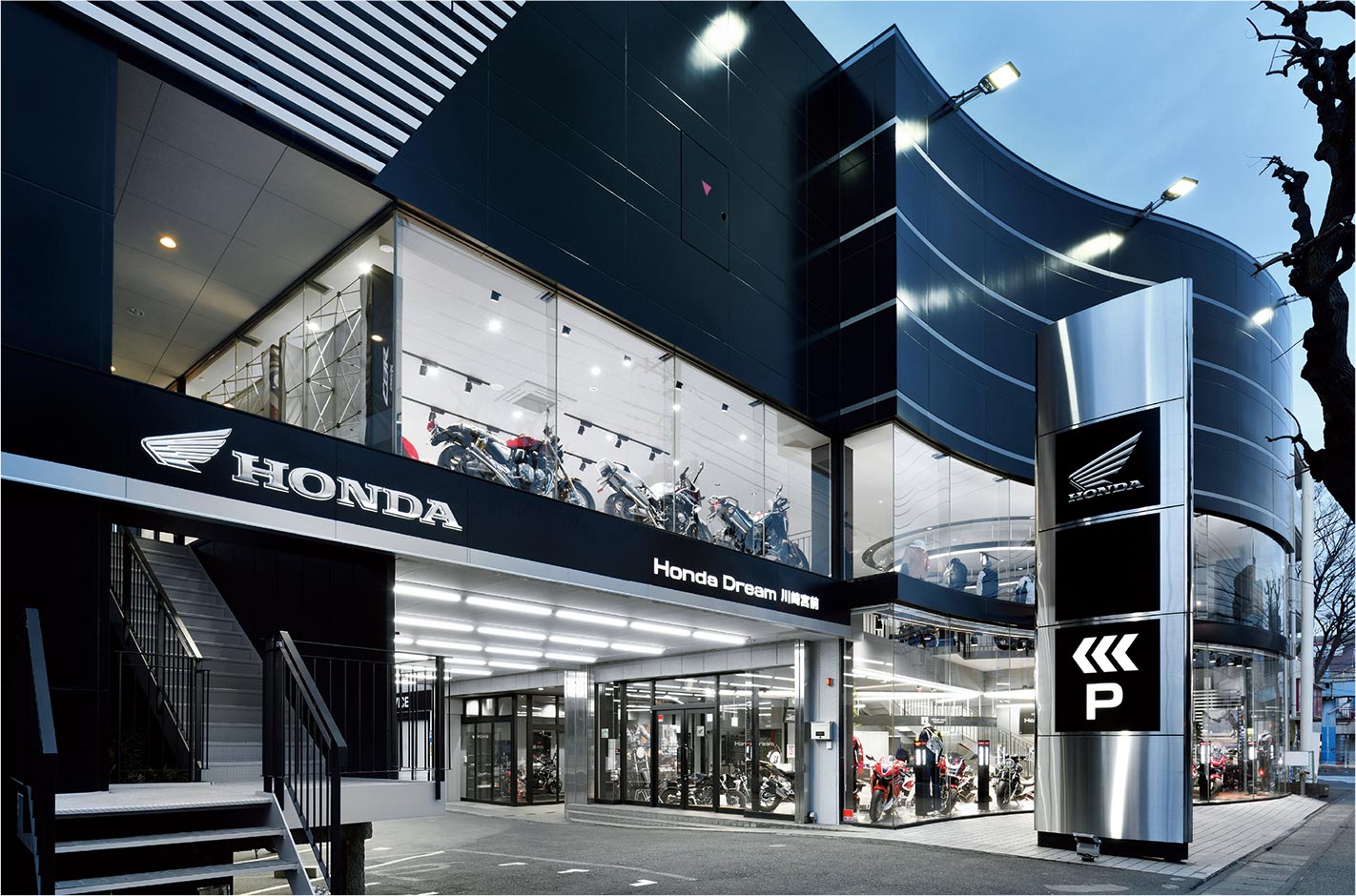
Honda Dream
Separate Dealership Channels to Accommodate the Different
Needs of Sport Model and Commuter Model Users
In 2018, Honda restructured its motorcycle sales network into two channels, Honda Dream and Honda Commuter. Honda Dream dealers offered a full lineup of Honda motorcycles, with a focus on sport models, and featured in-store displays that visualized images associated with each of the FUN models, along with a wide selection of riding gear. The aim of Honda Dream dealers is to propose new lifestyles to customers and provide high-quality services.
Honda Commuter dealers mainly sold commuter models of 250 cc or smaller, providing convenient products and reliable services rooted in the community and closely related to people’s daily lives.
Through this two-channel sales structure, HMJ was able to meet the needs of its customers for both sport and commuter models with precision, and build a motorcycle sales network with a high level of customer satisfaction.
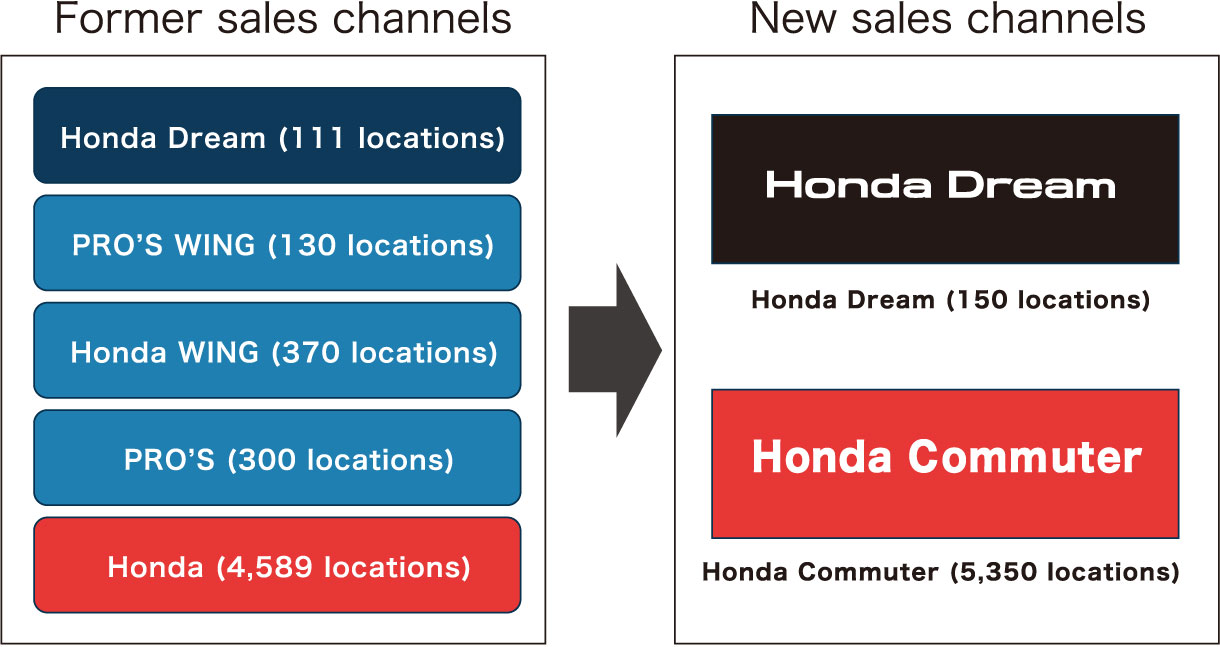
Honda Dream
Sells all Honda motorcycles, focusing on sport models
Honda Commuter
Sales of commuter models (250 cc and smaller)
Expansion of Class-2 Category Models Became Catalyst
for Market Revitalization
Since the 2000s, demand for 125 cc class motorcycles had grown rapidly in emerging countries, becoming popular means of transportation for daily life. In addition, major European Union (EU) countries introduced the B-A1 license in 1994, which allows automobile drivers to ride motorcycles under 125 cc with a car driver’s license, because of their usefulness for people’s mobility in urban areas.
In Japan, the convenience and usefulness of the Class-2 motorcycle category, with engine size of 125 cc or less, has long been recognized. They have a legal top speed of 60 km/h, double that of the Class-1 category, with engine size of 50 cc or less, they can carry two people and do not require a two-stage right turn. Despite the recommendations of the motorcycle industry, the Class-2 models did not become an entry model for motorcycles like Class-1 models, which can be ridden with a regular driver’s license.
Judging that if the Class-2 category license became easier to obtain, demand for Class- 2 models would increase and the domestic market would grow, Honda and the motorcycle industry lobbied for a revision of the licensing system. As a result, the law was revised so that a Class-2 license (small-class restricted standard motorcycle license / AT and small-class restricted standard motorcycle license) could be obtained in as little as two days from July 2018. In response, Honda introduced a series of iconic moped models such as the Monkey 125, Super Cub C125, CT125 Hunter Cub, and Dax 125, which gained popularity across the generations.
The stagnant domestic motorcycle market turned around to surpass 400,000 units in 2021 for the first time in six years. The market began to boom again, with the Class-2 category models showing particularly strong growth. The initiative by Honda in proposing the usefulness and convenience of Class-2 category models and its efforts to strengthen its product lineup contributed to the revitalization of the market.
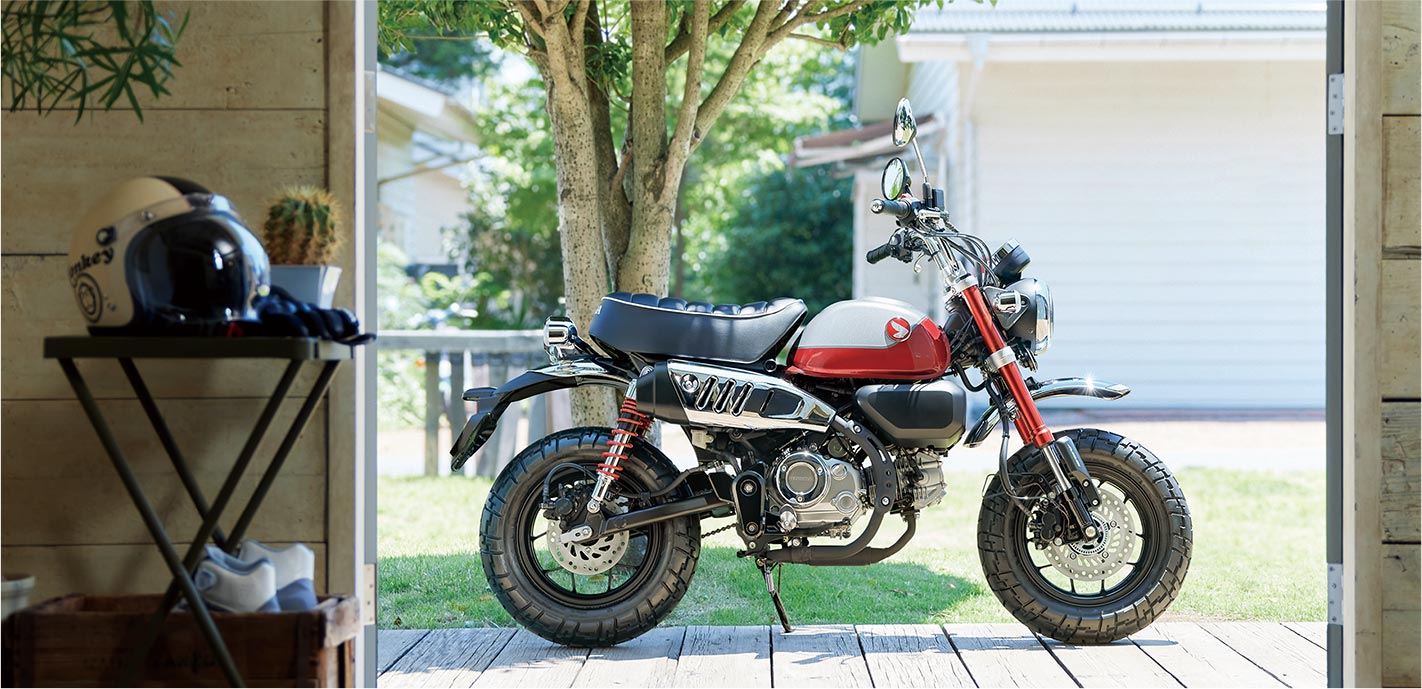
Monkey 125
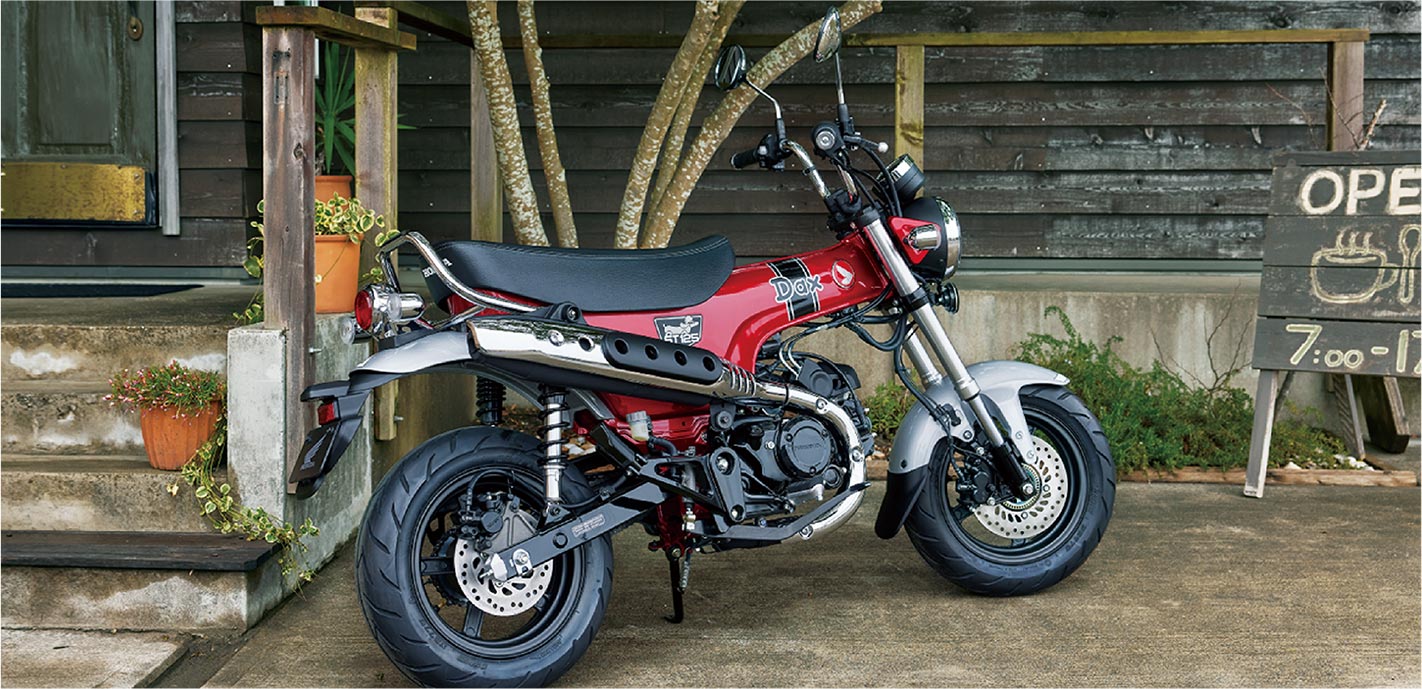
Dax 125
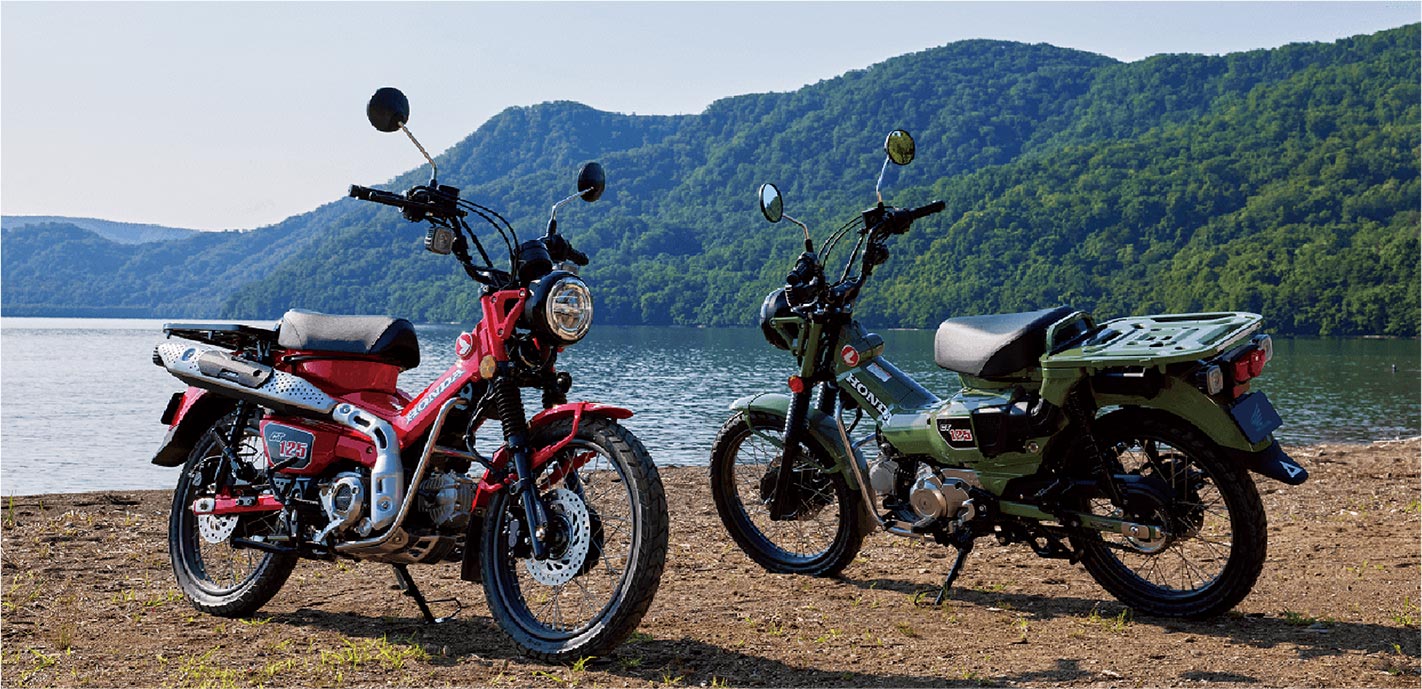
CT125 Hunter Cub
Contributing to Sustainable Infrastructure of Society
with Electric Motorcycles
Since 1994, when Honda started lease sales of the CUV-ES, the world's first* production electric motorcycle, to government agencies and municipalities in Japan, it has continued research on electric motorcycles, which resulted in the start of lease sales of two models in Japan: the EV-neo in 2010, and the PCX ELECTRIC powered by Honda Mobile Power Pack swappable battery, in 2018.
In order to respond quickly to the introduction of electric motorcycles for delivery services, Honda launched the BENLY e: series models for corporate customers in 2020. This was followed by the launch of the GYRO e: electric three-wheeled scooter for business use and the GYRO Canopy e: electric three-wheeled scooter with a roof for corporate customers in 2021. Honda pursued convenience by utilizing the Honda Mobile Power Pack e: and addressed the issues of range and charging time, major challenges for electric motorcycles.
Since the launch of the MD90 in 1971, developed exclusively for Japan Post, Honda played a major role in postal delivery. In 2020, Japan Post began using the BENLY e:II, heralding the electrification of motorcycles for postal delivery. Withstanding harsh use conditions, the use of BENLY e:II is expanding, from short-distance delivery in the Tokyo metropolitan area to some regional cities. Honda environmental technology is expanding its presence in the field of postal service, a key part of societal infrastructure.
* Honda research

BENLY e:I with enhanced equipment
Expectations for Motorcycle Manufacturers in the New Era
Compliance with environmental standards is of paramount importance. The motorcycle emission regulations that came into effect in 1998 led to a shift away from two-stroke engines and, in 2007, Japan was required to comply with Euro 3, the European motorcycle emission regulations, and Honda discontinued production of models that were difficult to switch from carburetors to fuel injection.
In 2016, the Euro 4 European regulation was applied in Japan, and many models that had been sold until then ceased production, as it was difficult to meet the standard even with radically renewed engines. On the other hand, as Euro 4 became the common environmental standard in many countries, new global models were launched in Japan. Among them, the CBR250RR, Rebel series, GB350 series, and other models became popular among a wide range of customer groups including young people and women.
In 2022, Euro 5 was applied in Japan, and the obligation to install OBD2 (the second generation of on-board diagnostic monitoring equipment) became particularly strict, forcing many popular models to end production. The subsequent Euro 6 will further tighten regulations, including the obligation to install the more advanced OBD2-2, making it more difficult for models to survive, especially those in the Japanese market.
Honda is entering an era in which the key to success will be how to grow the domestic motorcycle market in Japan while making progress in environmental responsiveness, including electrification (EV), with an eye toward introduction of global electric motorcycle models.
New values for motorcycles are being questioned from the standpoint of manufacturers and users alike, as well as their value as a means of transportation.
